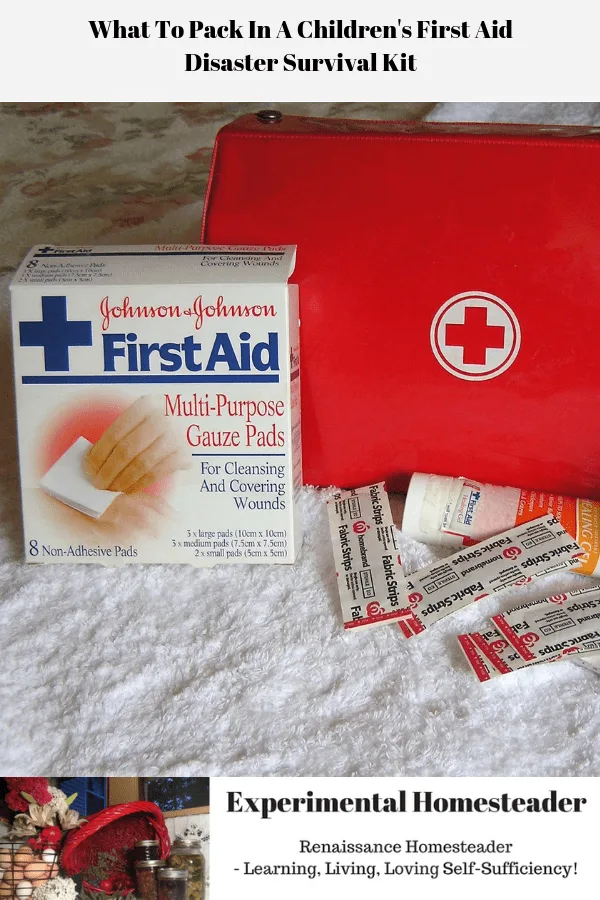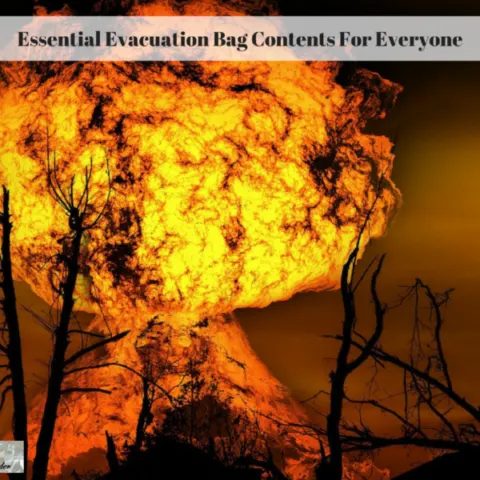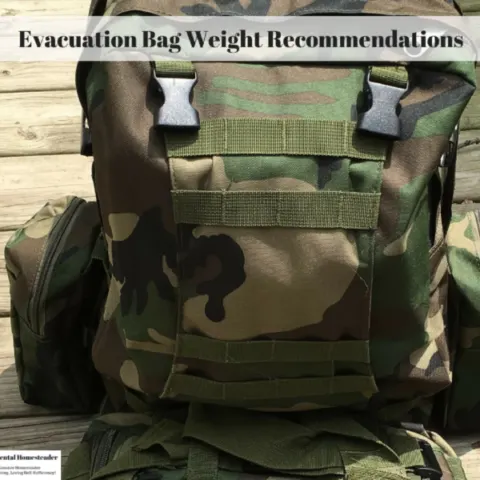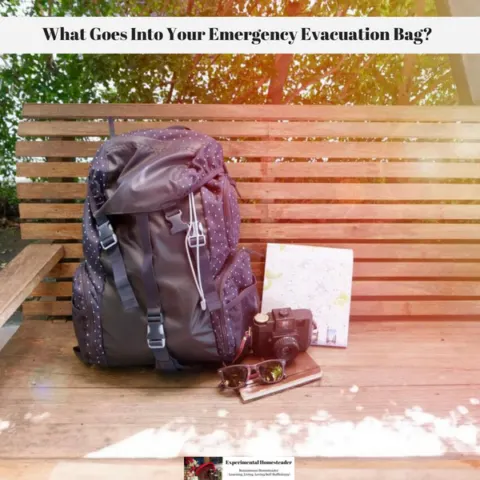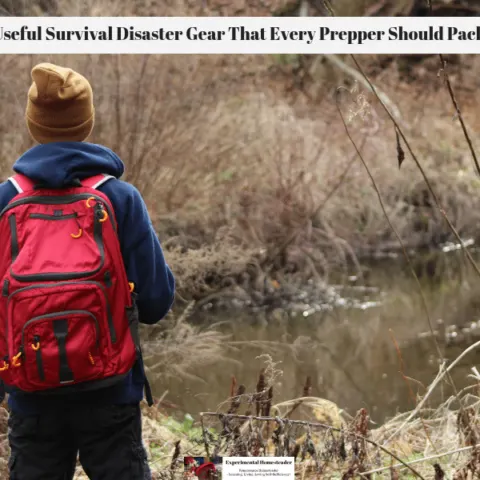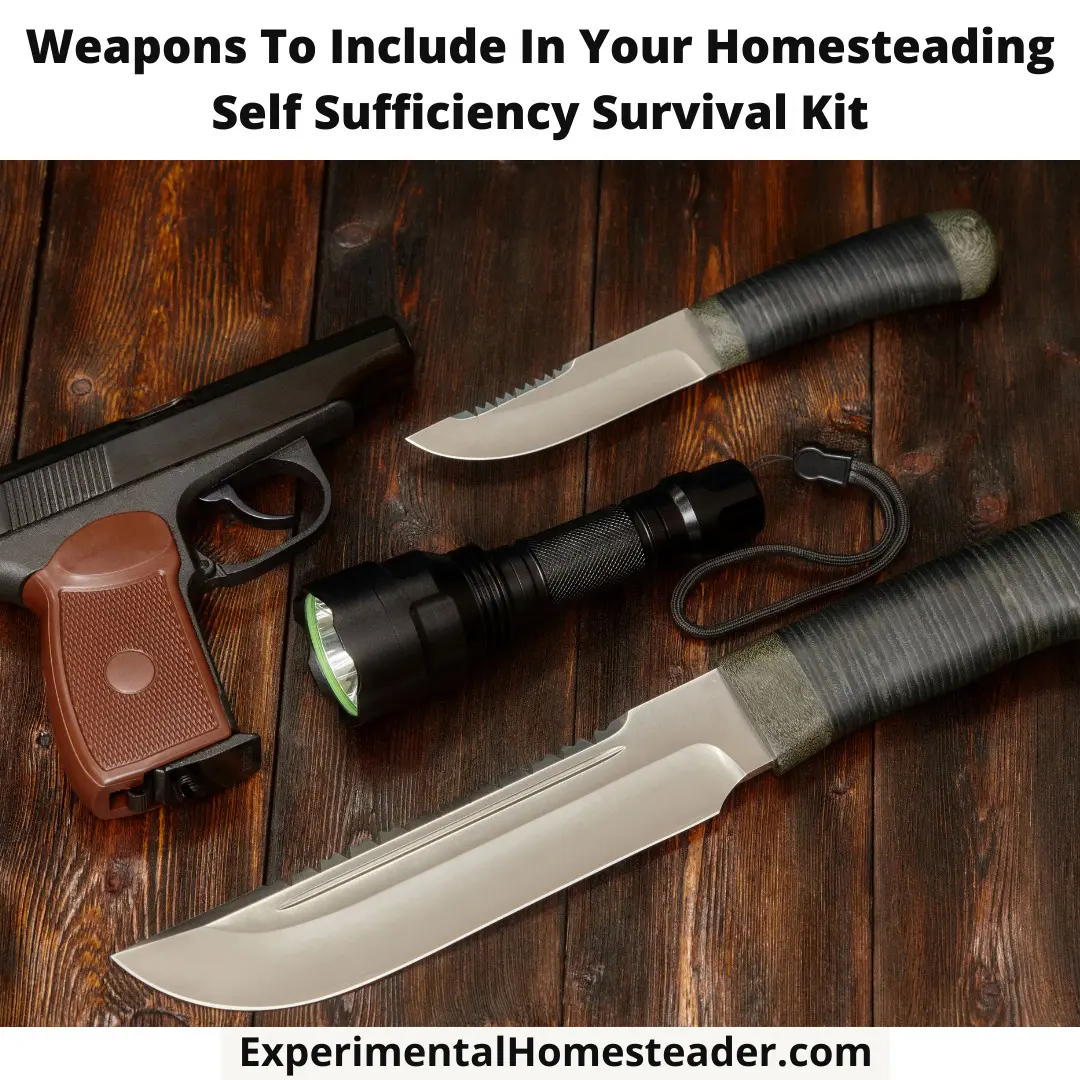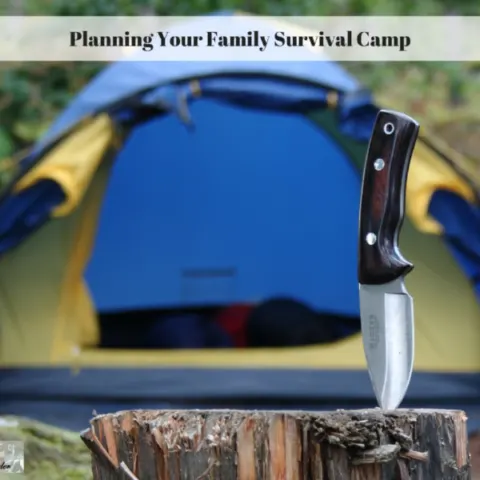Have you ever wondered what to pack in a children's first aid disaster survival kit?
If so, then this article will be extremely helpful for you.
While it is aimed at preppers who have children, even if you don't have any children at home, it doesn't hurt to keep a first aid kit for children at your home, in your vehicle or even as part of your emergency evacuation bag if you have room.
Why A Children's Disaster Survival Kit Is So Important
You might be shocked to discover how ill-prepared most people are, even parents, especially if they are not into survival and prepping
During an emergency, you may have neighbors or relatives with kids who do not have any type of disaster survival kit put together.
They may be desperate for certain items that their children may need, such as diapers or children's medication.
If you have thought ahead and made a children's first aid kit, you could be a lifesaver or at least a hero in their eyes.
It is important to note that children and adults have different needs and what works for adults often does not work for children, especially those under the age of 12.
While some needs may overlap, it is best to have a separate first aid kit for younger children, especially infants and toddlers.
This will help keep things organized and you will have easier access to whatever you may immediately need if there is an emergency.
Essential Supplies For A Children's First Aid Disaster Survival Kit
Below you will find a list of items that you can add to a children's first aid kit.
The rules are not set in stone.
It is up to you to decide which items are appropriate to include in a children's first aid disaster survival kit and store them along with your other survival gear.
- Band aids and bandages - Let's face it, children tend to get hurt easily, especially if they are in a new area and around potentially dangerous items such as fallen limbs. It is absolutely essential to have enough band aids and bandages in your children's first aid disaster survival kit to treat any possible wounds and be able to change the bandages out as necessary to keep the wound clean.
- Anti-inflammatories help to reduce a child's fever. Get the correct medication for your child or based on a child's age and store them. Children's Tylenol is often recommended by pediatricians for younger children, so it is a good idea to keep some of it on hand. There is a liquid form for babies and a chewable form for older children.
- Baby needs such as baby wipes, baby lotion, diaper pins, bulb syringes (to clear mucus), diaper rash cream, baby powder and other baby essentials. While you might already have some of these items in your main evacuation bag, there should also be some in your children's first aid disaster survival kit. One reason for this is to make the items easy to get to if it is late or night or you are in a rush. Anyone who has had children knows that a diaper rash can happen at any time. By making a special kit with these items it is going to be easier for you to immediately use the baby wipes and the rash cream to treat the problem. You don't want to go into the basement or wherever you keep your supplies to start rummaging through stuff in the middle of the night. Nor do you want to have to stop and open your evacuation bag to find what you need if you are trying to evacuate an area.
- Children's thermometer - Get a digital forehead non contact thermometer or two and keep them in the first aid kit. If you think your child or another child around you has a fever, you will be able to confirm the fact.
- Lip balm - Children who are sick may have dry lips. The lip balm will help soothe their lips. At the same time, ensure that any children with you drink enough water so that they are not dehydrated. In the event you are worried about having to stop to let the children go to the bathroom, you can always use Pull-Ups to help prevent accidents on older children.
- Hand sanitizer and latex gloves for your use. When treating wounds or infections, it is best to sanitize your hands and wear gloves before treating the child. This will minimize the risk of infection. It is also good to sanitize the children's hands before they eat if there is no way for them to wash. It is important to choose a hand sanitizer that contains 60 to 95 percent alcohol, with the higher amount being a better choice. It is important to note that hand sanitizer is not as effective as soap and water because it does not kill all germs, but it is better than not using anything in an emergency situation.
- Masks - Keep a few N-95 masks in the first aid kit. If your child has sinuses or breathing problems due to a dusty environment, the masks will help. Remember there are kids size masks and adult size masks available.
- Calamine lotion, antiseptic cream, etc. - Having these items will make it easy to treat scrapes and cuts. The antibiotic nature of the cream will accelerate healing and prevent infection.
- Tweezers and nail clippers - Tweezers are useful for removing foreign matter in wounds and of course, smaller nail clippers will be easier for clipping children's nails.
Besides these items, you may wish to add other items that you think a child may need in an emergency. You are the best person to decide on what goes into the children's first aid disaster survival kit. So, prepare it and place it in a safe place that you can easily access just in case you need it. - Prescription medications - Be sure to pack your children's prescription medications. If you get a 90 day supply of any of them, I suggest putting all the extra medication in the children's first aid kit and keeping out of their reach, so if you have to grab it and go the extra prescription medication is already packed.
Other Items To Add To A Children's Evacuation Bag
While the items above are essential to keep in a children's first aid disaster survival kit, anyone who has raised children or been around them knows that having toys or games on hand to occupy children is important.
While it is true, the first aid kit is more important - and in a true emergency, some things might need to get left behind, I suggest you pack an extra children's evacuation bag with other items they might want and take it with you if you can.
For example, if you know you are being evacuated out of an area due to an anticipated natural disaster, you usually have enough time and enough space in your vehicle to add an extra evacuation bag or two.
Here are some other items to consider packing.
- Quick snacks such as freeze dried fruits or vegetables, granola bars, peanut butter, crackers or age appropriate snacks such as the Gerber Graduates meals and snacks.
- Puzzles, coloring books, toys and games - choose ones that are lightweight and do not take up a lot of room. Electronic games, while often small, are something you might not want to take depending on the situation. Ideally you want things that will keep children occupied that do not make a lot of noise, need batteries or electricity.
- Ponchos, a raincoat or waterproof jacket - It is important for children to stay warm and dry. Let's face it, in an evacuation situation you don't know what kind of weather you might encounter and you don't want your child sick.
- Bottles - Pack extra bottles and nipples because these get lost, get nasty and sometimes break so it is a good idea to have some extra ones on hand, even if your child seems to have given up the bottle.
- Toothbrush and toothpaste - oral hygiene is still important and you don't want to leave these two items at home.
- Emergency Contact List - keep this on a piece of paper in several places such as in your purse or wallet, in your evacuation bag and in your children's evacuation bag in case things get separated. I suggest placing one in a plastic bag and using a safety pin to pin it to your child's clothing, just in case.
- Other Miscellaneous Items - keep an extra hairbrush packed. Small bottles of shampoo and small bars of soap or better yet, some of those disposable body wipes. Think of the items your child uses every single day and make sure you put as many of those as possible in your child's evacuation bag.
Final Thoughts On A Children's First Aid Disaster Survival Kit
Keeping your child - or any children who are with you - in a disaster survival situation calm is important.
They are going to wonder what is going on and may even panic themselves.
While everything is not going to be the same, letting them have things they are familiar with such as games and toys as well as trying to keep some kind of routine in place is going to help.
The more organized you are and the more unexpected situations you are prepared to deal with, the easier disaster survival is going to be for everyone.
Bug Out Bag + Evacuation Tips
Essential Evacuation Bag Contents For Everyone
Learn what your evacuation bag contents needs to include. A survival backpack is a very important part of a good emergency readiness plan.
Evacuation Bag Weight Recommendations
An emergency evacuation bag should contain essentials to get you through a 72 hour time period. Overpacking your evacuation bag is dangerous! Learn more!
What Goes Into Your Emergency Evacuation Bag?
Have you ever wondered what goes into an emergency evacuation bag or as it is sometimes called, a bug out bag? In a nutshell, you need to include things that are essential for survival in an emergency situation over a three day period.
Useful Survival Disaster Gear That Every Prepper Should Pack
It is important to know what the most useful survival disaster gear is so you include it in your bug out bag. Here is what every prepper should pack!
Weapons To Include In Your Homesteading Self Sufficiency Survival Kit
Learn what weapons - both lethal and non-lethal - to include in your homesteading self sufficiency survival kit and why you need them.
Paracord Bracelet Uses
Have you ever wondered what paracord bracelet uses are? Check out these paracord uses for survival situations and everyday situations!


